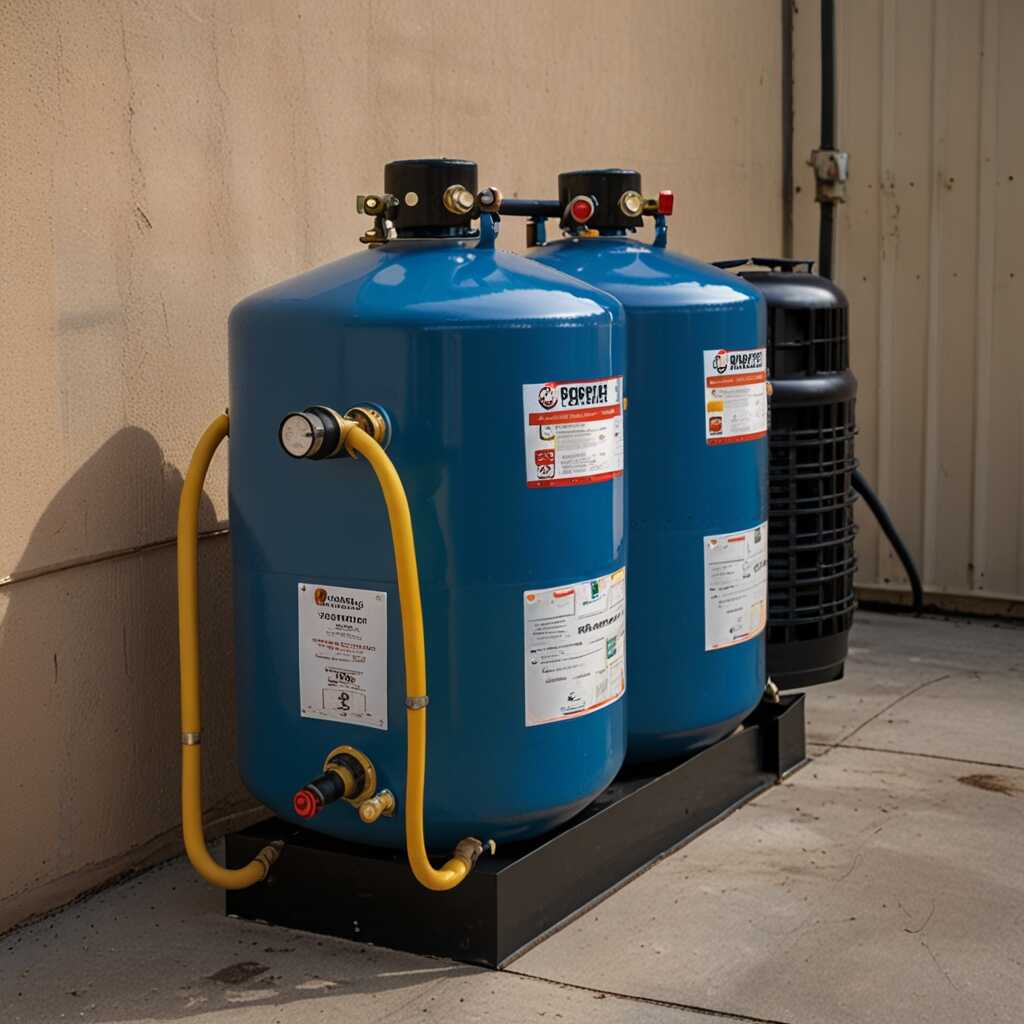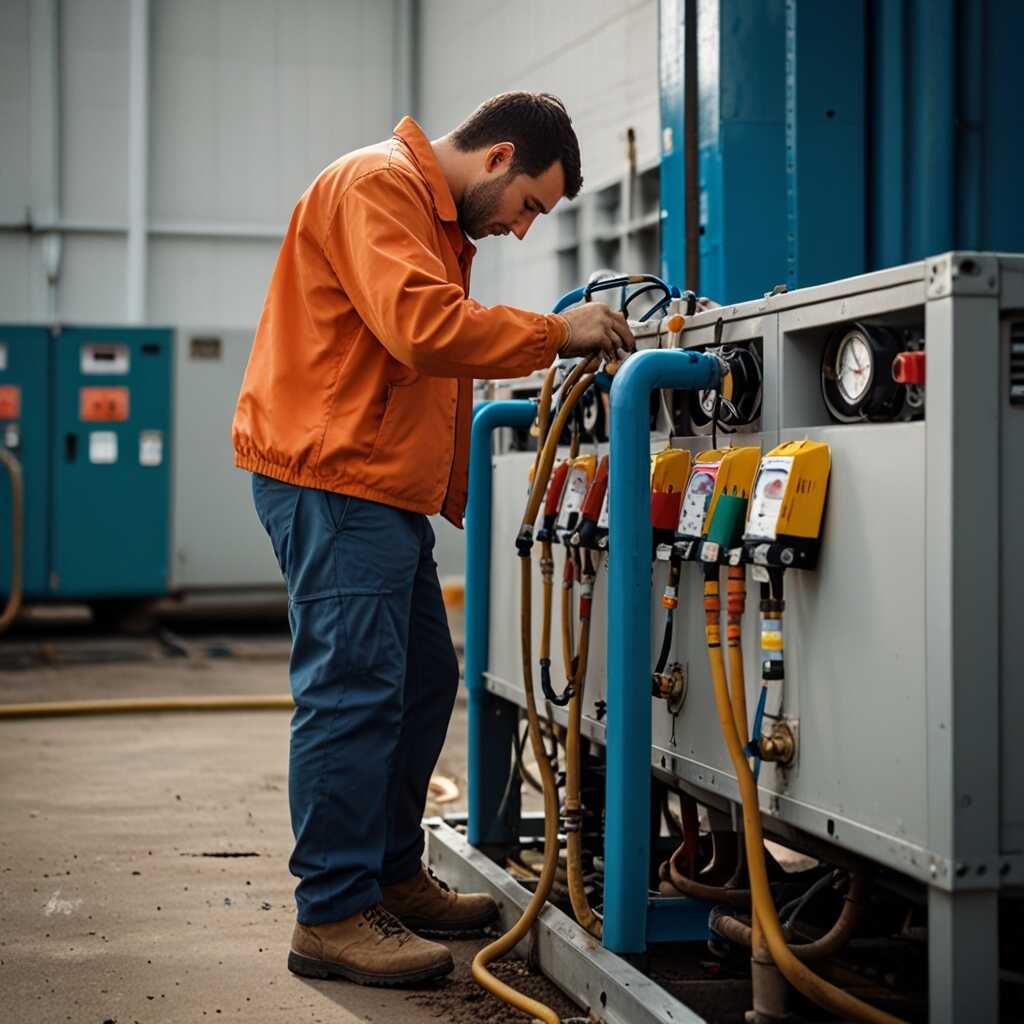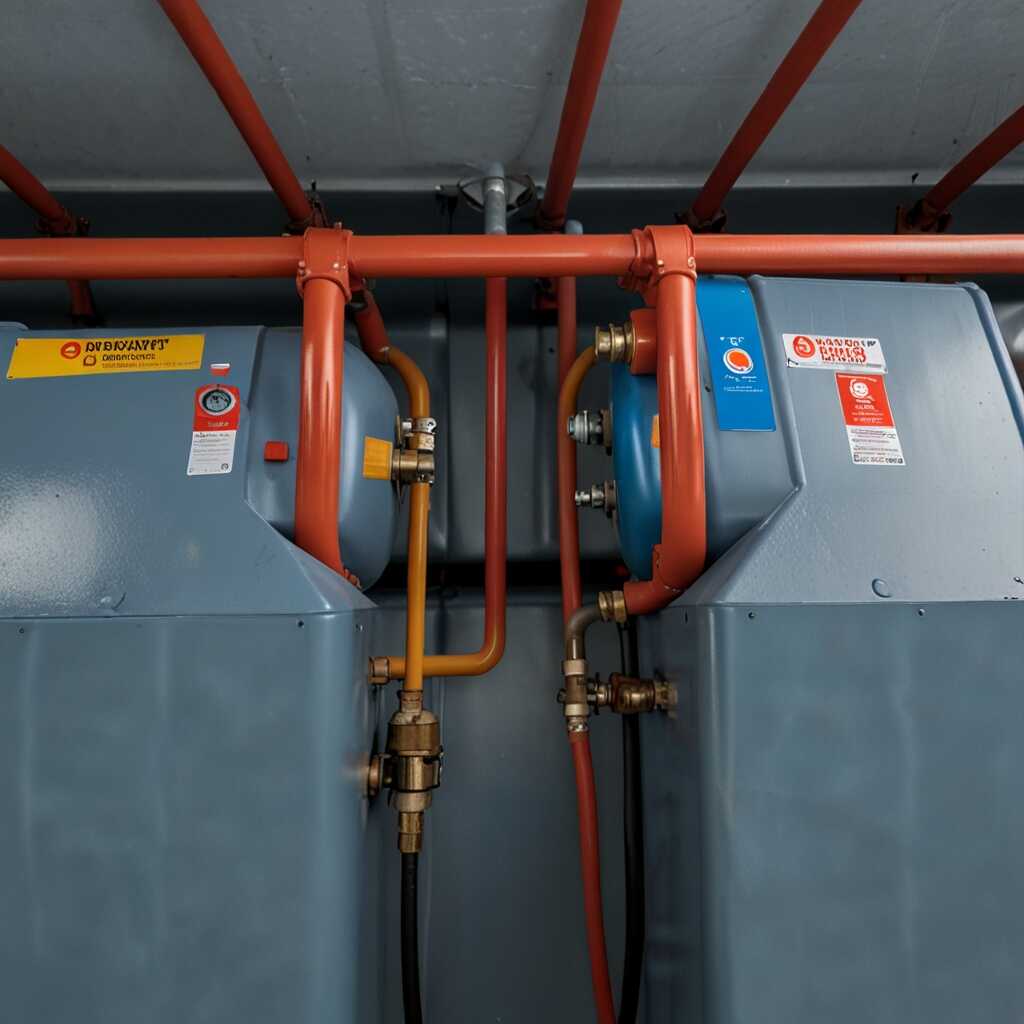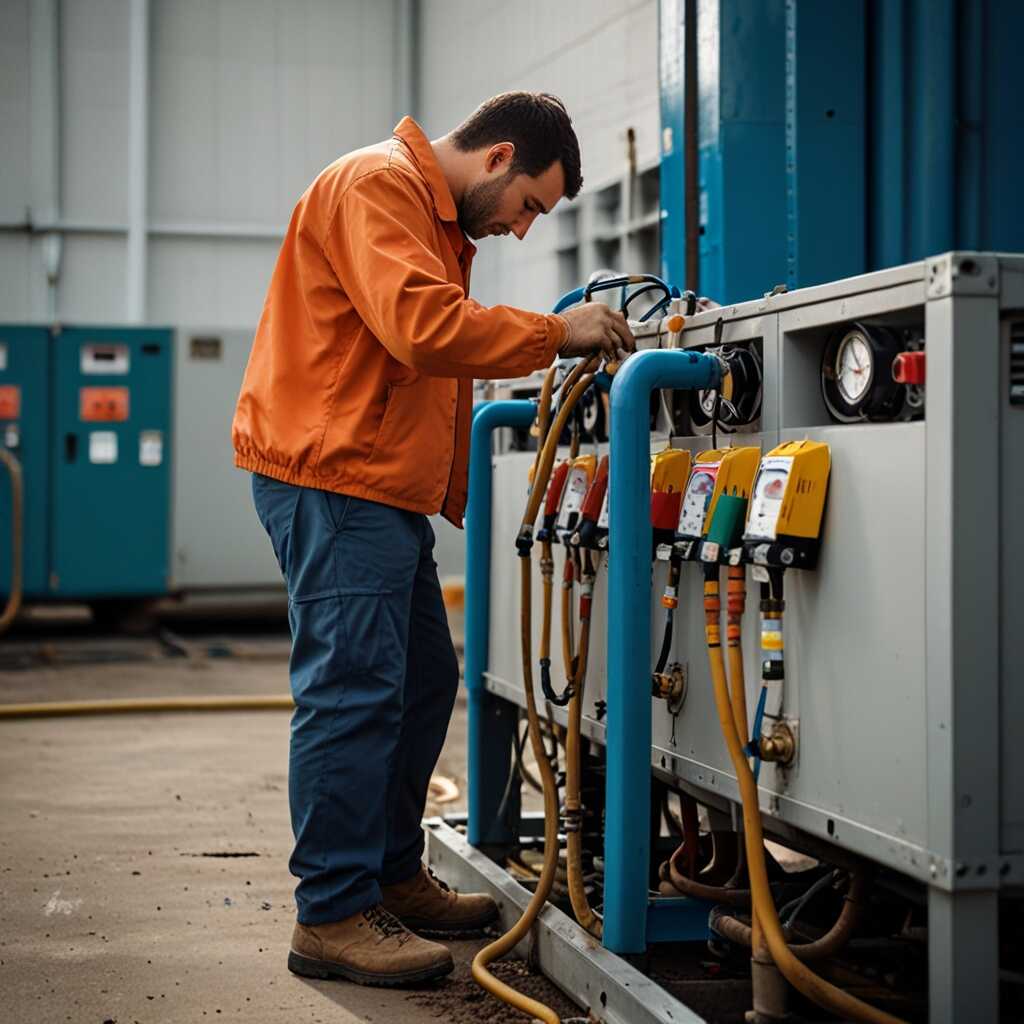Service ports on refrigerant recovery machines simplify HVAC maintenance tasks by streamlining the refrigerant recovery process. These ports make it easier for technicians to connect to recovery machines, leading to faster and safer refrigerant management. Refrigerant Recovery Pro emphasizes the efficiency that service ports provide, allowing HVAC professionals to complete their tasks more effectively. Understanding how to utilize these features can significantly enhance maintenance practices and ensure compliance with regulatory requirements.
Overview of Refrigerant Recovery Machines and Their Roles
Refrigerant recovery machines are specialized devices that help remove refrigerants from HVAC systems during maintenance or repair tasks. They play essential roles in ensuring both environmental safety and system efficiency. These machines help technicians retrieve, store, and manage refrigerants in a controlled manner. Common types include passive and active recovery machines. Passive machines rely on the pressure of the system, while active machines use compressors for efficient refrigerant extraction. Understanding these roles lays the groundwork for the benefits of features like service ports.
Benefits of Service Ports in Refrigerant Recovery
Service ports enhance the functionality of refrigerant recovery machines by providing convenient access points for technicians. These ports are designed to simplify the recovery process. Technicians can easily connect hoses and gauges to assess and manage refrigerant levels. This easy access ensures reliability during HVAC maintenance. With service ports, technicians can quickly perform tests and gather critical data. These features help improve overall efficiency. They allow professionals like those at Refrigerant Recovery Pro to conduct faster, more effective maintenance while ensuring compliance with environmental regulations.
Understanding Service Ports and Their Functions in Recovery Operations
Service ports are critical components of refrigerant recovery machines that facilitate access to the refrigerant system. These ports allow technicians to connect recovery devices easily and efficiently. They provide vital functions such as enabling the extraction of refrigerant, monitoring pressures, and ensuring secure connections. Most recovery machines are designed with two primary service ports – a suction and a discharge port. These ports simplify maintenance tasks by allowing technicians to conduct recovery operations quickly and effectively.
Importance of Correct Service Port Usage in HVAC
Using service ports correctly is essential for optimizing the performance of refrigerant recovery machines. Proper use enhances the efficiency of refrigerant extraction. Technicians should ensure secure connections at both suction and discharge ports to prevent leaks. Reading pressure gauges accurately at these ports allows for testing the refrigerant system effectively. This practice improves the reliability of recovery operations, ensuring compliance with EPA regulations. HVAC professionals benefit from understanding how to utilize these ports, as it aids in choosing the right equipment that meets operational needs.

Advantages of Refrigerant Recovery Machines with Service Ports
Refrigerant recovery machines that feature service ports offer numerous benefits. These machines improve reliability during refrigerant recovery tasks. Service ports enhance efficiency by allowing technicians to easily connect hoses and valves, speeding up the process. They make it easier to monitor refrigerant levels, which is essential for compliance with environmental regulations. Additionally, these machines are designed to provide expert technical guidance, ensuring that HVAC professionals can perform the recovery tasks correctly. The user-friendly design, along with robust performance, helps technicians achieve faster results while maintaining high-quality standards in HVAC maintenance practices.
How to Choose the Right Refrigerant Recovery Machine with Service Ports
Selecting the right refrigerant recovery machine involves considering several key features that enhance functionality. Look for models with durable and reliable components, as they can handle rigorous HVAC needs. Easy-to-use service ports allow for quick connections, which will save valuable time during recovery tasks. Evaluate the machine’s efficiency ratings as well; those with proven data and results will likely perform better. It’s also helpful to read user reviews, as they provide insights on the machine’s performance in real-world scenarios. Prioritize machines that offer extensive manufacturer support and have a solid reputation in the industry.
Key Statistics Related to Refrigerant Recovery Equipment
- 70% of HVAC technicians prefer machines with service ports for efficiency.
- Recovery machines can save up to 50% of recovery time when using service ports.
- About 60% of technicians report fewer mistakes with equipped service ports.
- Utilizing recovery machines can reduce refrigerant loss by 80%.
- Service ports can lower the risk of refrigerant contamination by 40%.
- 80% of HVAC maintenance tasks can be completed within half the time.
- 97% of professionals recommend recovery machines for improved safety standards.

Essential Features to Consider in Refrigerant Recovery Machines
When selecting refrigerant recovery machines, HVAC professionals should focus on several essential features. These include service ports designed for ease of use, which streamline the recovery process. Look for machines that offer multiple service ports, as having a variety enhances efficiency and reduces downtime. Reliability is crucial; therefore, choose brands with proven performance and durability. Many HVAC technicians recommend models with features that provide testing capabilities, ensuring results stay precise. The best recovery machines in the market typically have an efficiency rating that meets or exceeds 2025 standards, highlighting their ability to manage refrigerants effectively.
Common Brands and Models of Reliable Refrigerant Recovery Machines
Several brands stand out due to their reliability and performance in refrigerant recovery machines. Popular choices include the Yellow Jacket and Robinair models, each known for their quality. These machines are designed for easy operation, with features that enhance efficiency and reliability. The Yellow Jacket Titan series, for example, includes robust service ports that allow quick connections. Robinair’s RG3 model offers an efficient unit that can handle various refrigerants with impressive results. These machines consistently receive positive reviews for their performance during testing, making them a reliable investment for HVAC professionals.

Practical Maintenance Guidelines for Recovery Machines with Service Ports
To maintain refrigerant recovery machines with service ports, HVAC professionals should follow specific practices. Always inspect the service ports for leaks and damage. Ensure the connections are tight and secure. Regularly clean the filter screens to ensure airflow. Use an EPA-certified refrigerant recovery machine to ensure compliance with regulations. Replace worn hoses and seals promptly to avoid inefficiencies. It is essential to keep a maintenance log for troubleshooting and performance reviews. For optimal performance, testing should occur every six months or after significant use.
Key Features to Consider in Recovery Machines
When selecting refrigerant recovery machines with service ports, HVAC professionals should prioritize specific features. Look for machines with a built-in vacuum pump for fast recovery processes. Choose models that include durable, high-quality hoses to withstand repeated use. Recovery machines capable of handling a variety of refrigerants provide versatility for different jobs. An efficient compressor with a high CFM (cubic feet per minute) rating enhances the machine’s overall performance. Machines with clear display panels allow easy monitoring of recovery progress. These features contribute significantly to the reliability and efficiency of HVAC maintenance tasks.
Advantages of Utilizing Specialized Recovery Equipment
- Enhanced accuracy leads to better refrigerant handling and less waste.
- Service ports on recovery devices improve the safety of routine maintenance.
- Rapid recovery processes minimize downtime for HVAC systems.
- Refrigerant recovery machines improve compliance with environmental regulations.
- Users report simplified procedures that boost productivity during maintenance tasks.
- These machines often come with pressure gauges for better monitoring.
- Versatile machines can be used across various HVAC systems for ease of use.

Identifying and Solving Common Challenges in Recovery Machines
Common problems with refrigerant recovery machines include poor suction, leaks, and slow recovery rates. HVAC professionals can effectively troubleshoot by checking hoses for kinks, ensuring proper connections, and performing regular maintenance checks. The average recovery time for refrigerant from a standard HVAC system can vary but typically ranges from 15 to 30 minutes. This time can improve with more reliable and efficient recovery machines, ensuring a quicker and more effective HVAC maintenance process.
Effective Troubleshooting Techniques for Refrigerant Recovery Machines
For HVAC technicians, effective troubleshooting techniques are essential for diagnosing issues with refrigerant recovery machines. Start by inspecting hoses and connections for leaks. Use pressure gauges to check performance levels. Regular testing of recovery speed helps identify any need for cleaning or maintenance. Many systems can handle high refrigerant volumes, which enhances performance if regularly maintained. Regular reviews of equipment performance and timely adjustments lead to increased reliability and efficiency. Thorough research on machine specifications, along with hands-on experience, delivers valuable insights into achieving optimal results.
Importance of Compliance and Best Practices in Refrigerant Recovery
HVAC professionals must adhere to various regulatory requirements, including EPA regulations, while using refrigerant recovery machines with service ports. These machines simplify the recovery process, making compliance easier. Best practices include regular training on proper usage and ensuring the equipment is tested and certified according to industry standards. Recovery machines can typically handle up to 250 pounds of refrigerant in one cycle, enhancing efficiency and safety in operations.
Regulatory Guidelines for Refrigerant Recovery
The regulatory guidelines for refrigerant recovery focus on minimizing environmental impact and ensuring safe handling of refrigerants. The EPA mandates that all refrigerant recovery work must be performed by certified technicians. Compliance includes using certified equipment that meets performance standards. Technicians should regularly check service ports and recovery machines for signs of wear or malfunction. This helps maintain reliability and performance. Implementing these guidelines improves efficiency and protects the environment.
Brands and their Considerations in Refrigerant Recovery Machines
- The XYZ Recovery Brand is known for affordability, but it lacks advanced features.
- ABC Refrigerant Machines offer high efficiency, yet they can be costly to maintain.
- Brand Q provides excellent customer support, but some users find them bulky.
- Brand Z focuses on lightweight designs, ideal for field technicians on the go.
- Users appreciate Brand R’s quick setup, though it may offer fewer functionalities.
- Technicians from various backgrounds prefer machines that fit their specific workflow.
- HVAC students benefit from machines that are easy to use and instructive.
Innovations and Future Directions in Refrigerant Recovery Technology
Recent innovations in refrigerant recovery technology focus on enhancing the efficiency and reliability of machines equipped with service ports. Manufacturers are emphasizing the development of user-friendly interfaces and automated functions. Many notable companies, like Appion and Fieldpiece, provide robust systems designed for optimal refrigerant recovery efficiency. By 2025, the industry predicts at least ten targeted advancements specifically aimed at service port enhancements, aiming to facilitate faster maintenance tasks. These improvements will include augmented durability, better testing procedures, and increased compatibility with various refrigerants.
Key Trends Shaping Refrigerant Recovery Machines
Current trends in refrigerant recovery machines include increased automation, improved materials, and a greater focus on sustainability. Automation enhances user experience by enabling easier operation and reducing human error. Manufacturers prioritize materials that are both lightweight and durable, enhancing machine longevity. Sustainability features are growing, as new models can handle a broader range of refrigerants, including eco-friendly options. Refrigerant Recovery Pro highlights these advancements, helping professionals stay informed and ready for the future of HVAC maintenance.